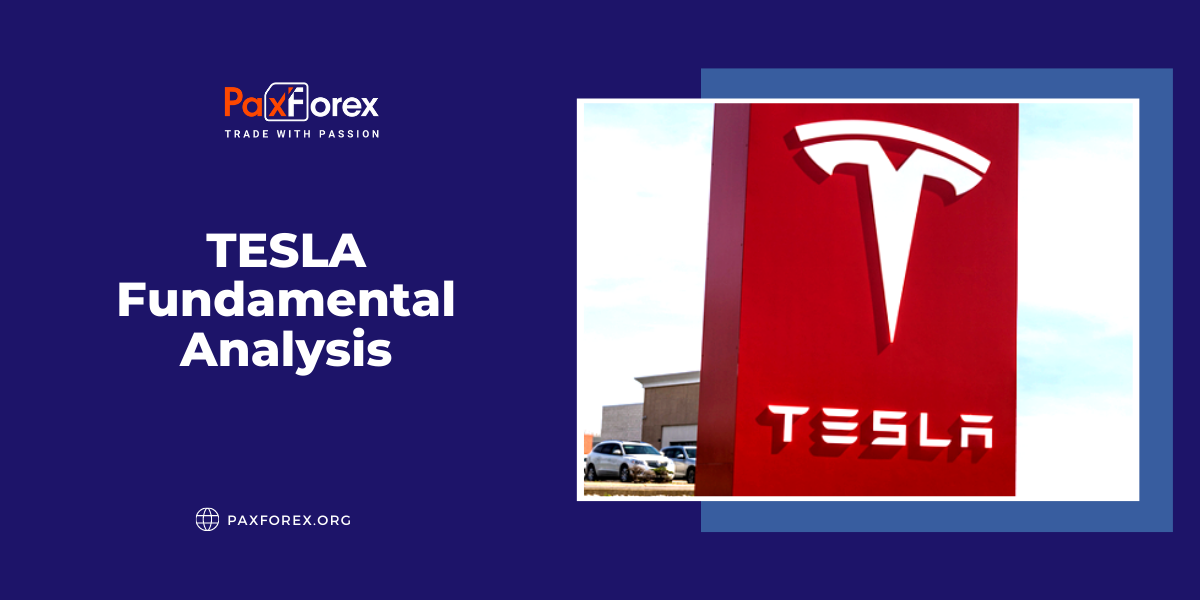
Source: PaxForex Premium Analytics Portal, Fundamental Insight
Valuing a stock is difficult enough even at the best of times, but in the case of Tesla, it is much more complicated. On the one hand, there is some excitement around the company's long-term growth projects. On the other hand, in the short term, Tesla needs to reach its production targets in 2022 amid supply disruptions and COVID-19-related outages in China. Both matter. Both are important. But should investors pay too much attention to them? Let's sort it out.
The short answer is that these issues shouldn't overly worry a long-term investor, but keep in mind that the stock price will be affected by these issues. There is an investment reason to buy Tesla stock that is not overly focused on these two debates.
Starting with long-term growth projects, when the CEO speaks, investors listen. CEO Elon Musk's statements during the last earnings report will factor into how some investors feel about the company's stock. For reference, Optimus is Tesla's humanoid robot in development and full autonomous driving (FSD) software in beta testing programs. According to Musk during the earnings call:
"Optimus will end up being worth more than the car business, more than FSD."
As for the technical capabilities for FSD, "And I think we're going to get there this year."
On Tesla's robotaxi in development: "We'll have a robotaxi event next year and talk about it in more detail, but we're aiming for mass production in 2024."
"It looks like a robotaxi ride will be cheaper than a bus ticket."
There's a lot to ponder in these statements, and anyone assessing the approaching commercial introduction of FSD and mass production of robotaxis in 2024 (with the kind of commercial appeal implied in Musk's statement about ride costs) has reason to be extremely optimistic. And that's even before considering how much the Optimus business might cost.
There are three ways to think about this. The first is to recognize that there is significant growth potential in these projects, and to accept them as part of the potential growth of the stock.
The second argument has a few nuances. The fact that the market may be valuing some of Tesla's exciting growth programs means that they are more likely to be realized. If the market gives Tesla a high valuation, and the company can raise capital quickly and cheaply, it is easier for Tesla to invest in these projects. Thus, they are more likely to come to fruition.
Third, more conservative investors may rule out any potential growth opportunities in robotaxis, FSD, or Optimus in favor of simply focusing on the potential in the electric vehicle (EV) business.
As for the near-term outlook, it is undeniable that the market is responding to the manufacturing challenges currently facing the automotive industry. Unfortunately, continued shortages of components (particularly semiconductors), the war in Ukraine and its impact on automotive supplies (e.g., copper wire harnesses from Ukraine and palladium from Russia), and plant closures in China have led to lower estimates of light vehicle production (LVP) in 2022.
Given the importance of LVP to the auto sector, several companies associated with the auto industry have lowered their full-year forecasts and faced production setbacks. Tesla is not immune to these problems.
After producing just 305,000 units in the first quarter and Musk saying that "the most likely production of cars in the second quarter will be the same as the first, maybe a little lower," Tesla will be under pressure to increase production to about 900,000 in the second half to potentially reach its goal of 1.5 million.
While it is important not to get hung up on a few weak quarters of production, failure to meet production targets will have financial consequences, and this will be built into the valuation. Nevertheless, Tesla is a growth stock, and the key to its valuation is what lies ahead, not how much it will make in 2022. The supply disruptions will disappear at some point, and investors can expect to ramp up production as long as demand for the cars remains strong.
In general, investors should focus on the fundamentals of the business. Tesla, which trades at 44 times Wall Street analysts' forecast for free cash flow in 2024, is certainly not a cheap stock unless you believe the company can maintain its dominant position in the electric car market and continue to grow profit margins as it ramps up production in the coming years. Of course, this is a debate whose resolution will make a difference in Tesla's valuation, so buying the stock makes sense if you're in a positive mood, and if not, it's best to avoid it.
In any case, it would probably be a mistake to get too carried away with Tesla's more speculative growth prospects, at least if you are likely to prematurely value them. Likewise, it's a mistake to get too excited if the company doesn't reach its 2022 production target. These are not the issues that will determine Tesla's valuation over the long term, and there are plenty of reasons to be optimistic about its car business.
As long as the price is above the 706.00 level, follow the recommendations below:
- Time frame: D1
- Recommendation: long position
- Entry point: 724.45
- Take Profit 1: 794.00
- Take Profit 2: 846.00
Alternative scenario:
If the level of 706.00 is broken-down, follow the recommendations below:
- Time frame: D1
- Recommendation: short position
- Entry point: 706.00
- Take Profit 1: 677.00
- Take Profit 2: 619.00













